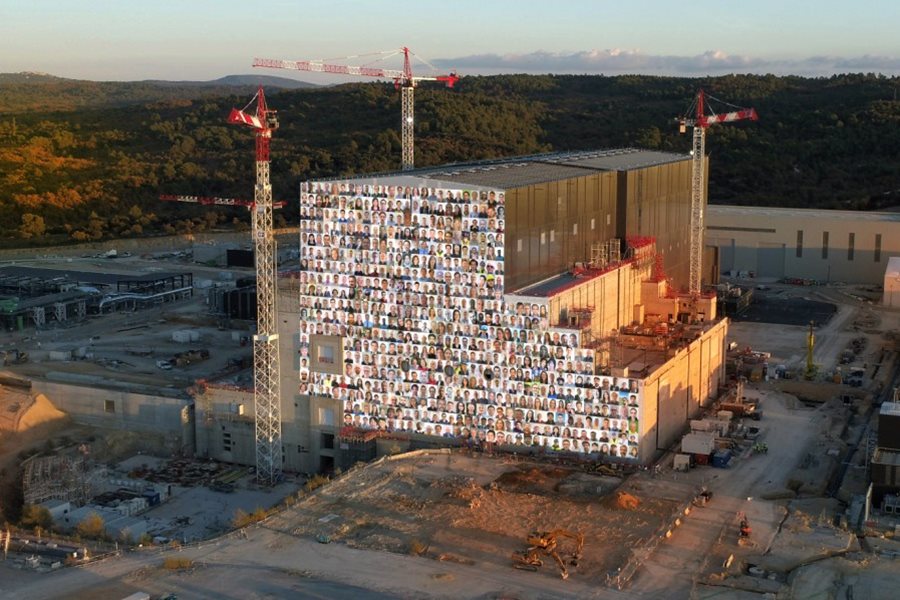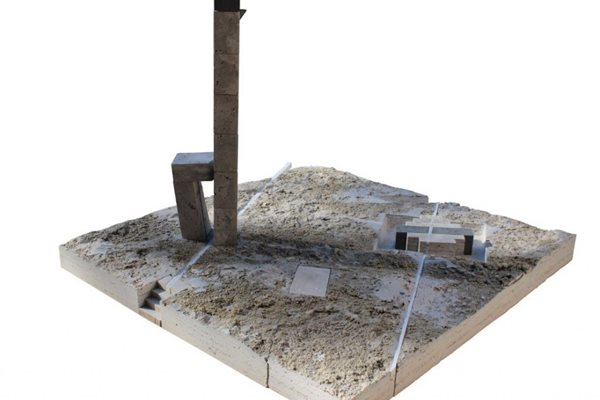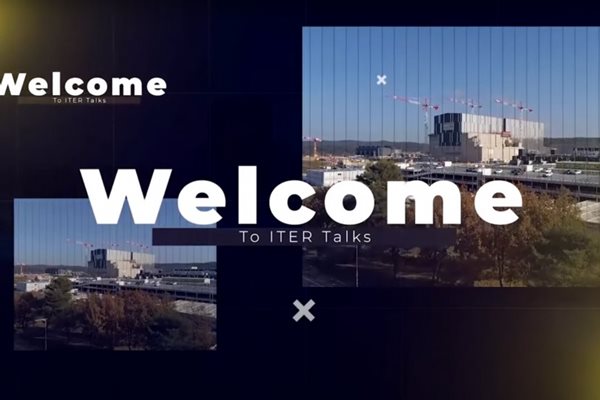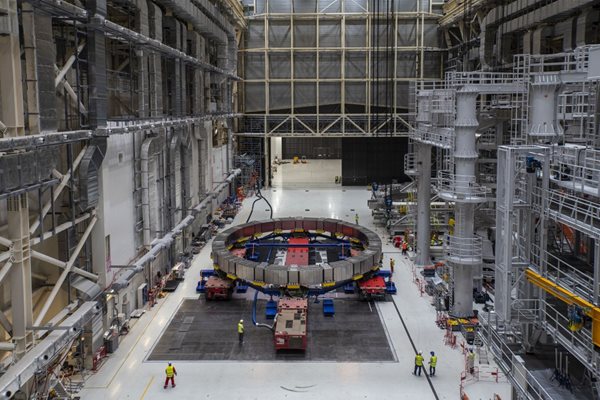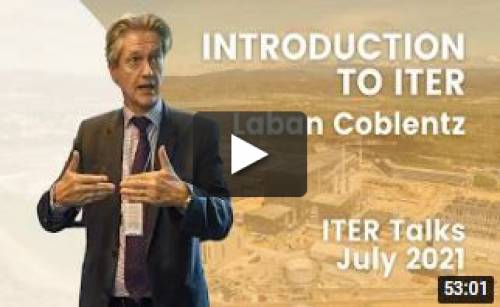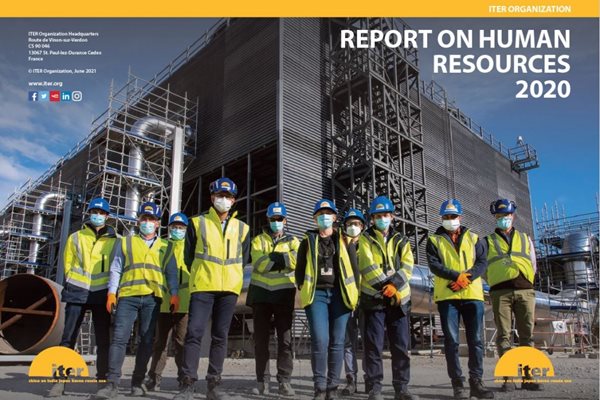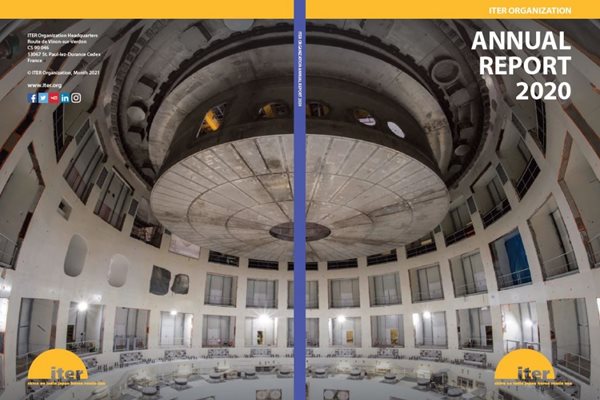
you're currently reading the news digest published from 19 Jul 2021 to 26 Jul 2021
featured4
video1
publication2
press14
featured
Staff | The men and women of ITER
They hail from Ahmedabad and Prague ... from Naka and Moscow ... from Seoul, Hefei, Atlanta and hundreds of other towns and cities across the 35 nations participating in the project. These are the men and women of ITER—nearly one thousand staff members, speaking at least 30 languages—who have relocated to southern France to be part of the ITER adventure. The 2020 Report on Human Resources, released just this month by the Human Resources Department, offers the most recent portrait of the human element of ITER. Who is behind the engineering, the science, and the day-to-day management and administration of the world's largest research collaboration? ITER Organization staff numbers grew by 6.5 percent in 2020, reaching a count of 989 by 31 December 2020. (Today, six months later, 1,014 people are directly employed by the project.) European staff members represent 68.6 percent of the 2020 total, while staff from the six other Members is distributed as follows: China 9 percent, India 2.8 percent, Japan 3.5 percent, Korea 5.2 percent, Russia 6 percent; and the United States 5 percent. Staff joined the project from all ITER Members in 2020, with the Human Resources Department fielding 3,488 applications for 91 newcomer recruitments. Of total appointments in 2020, 25.2 percent were women. Just over 75 percent of ITER staff members have an advanced degree (Master's, engineering degree, or PhD). Women represent just under 20 percent of the staff body, and hold 9.4% of management positions. The average age of all staff is 44.7 years old (42.6 years for women, and 45.3 years for men). In 2020 turnover dropped to 3.8 percent, from 5.3 percent in 2019 and 5.9 percent in 2018. Nearly three-fourths of staff has chosen to live in either Aix-en-Provence (pop. 140,000) or Manosque (pop. 22,500), two of the larger towns in the ITER environment, and 73 percent have at least one dependent child. Nearly 79 percent of staff were rewarded in 2020 for performance, up from 62.2 percent in 2019. One non-staff category—the ITER Project Associates—progressed strongly in 2020, increasing to 209 from 160 the previous year. The Human Resources Department continued to fulfil all of its normal business activities in 2020 despite the particular context of the pandemic, carrying out recruitment, training, and all employee services. See all of the granular detail in the 2020 ITER Organization Report on Human Resources in this issue of the ITER Newsline (or click here). View the 2021 ITER Organization staff photo here.
Art and ITER | Two sisters, two suns and a monument to fusion
Amid the gentle slopes of Asciano, Italy, there stands a stone window that frames the Sun on the summer solstice. It looks as though it might have always been there, a striking but minimalist shrine to the Sun in the Italian countryside. But the sculpture, Site Transitoire, was created in 1993 by artist Jean-Paul Philippe. And because of Asciano's close connection to its sister city of La Roque d'Anthéron—situated only 30 minutes from the ITER site—Philippe proposed a sister sculpture, Résonances, that would frame a secondary Sun: the ITER Tokamak. Now, Résonances is in the early stages of creation. Philippe is currently choosing the stone he will use for the project, and the current goal is to have the sculpture installed in Le Parc Des Adrechs around summer 2022. As Site Transitoire paid homage to the Sun and the intersection of nature and art, so will its sister. The sculpture's careful angles and notches capture the Sun at certain times of the day and year, and its gold-foil tip will reflect the Sun's light from the park at one end of the city to the Cistercian abbey, Silvacane, at the other end. But along with the connection between two monuments and two cities, Résonances will draw together two suns: the titan that burns millions of kilometres away and its little sister nestled in the womb of the ITER Project. Though the sculpture will be located about 45 km away from ITER site in Saint-Paul-lèz-Durance, Philippe's design brings ITER and La Roque d'Anthéron together. The monument itself is built from seven pieces of stone to represent the seven Members of the ITER Organization, and it will face the ITER site from its place in Le Parc Des Adrechs. The park is perched on the edge of the Durance Canal and the road that ITER uses to bring components on site, so Résonances may oversee the progress of the machine as it grows nearer to completion. Although the project was not commissioned by the ITER program*, the monument will be a fitting tribute to all those who have dedicated great time and effort to make the ITER Project possible. A smaller replica of the sculpture (see the simulated photo at right) will even greet visitors as they enter the ITER site. As Résonances is funded by private financial contributions, it is possible for anyone interested in ITER or in the aesthetic and symbolic value of the sculpture to make a donation towards the creation of the monument. The artist has proposed a way to incorporate donors by name within the monument to acknowledge their contribution. And years, even decades from now, when the tokamak burns like a microcosmic star and ITER's mission is in the past, Résonances will remain as a physical reminder of the history behind ITER, of La Roque d'Anthéron and her sister city, and of Jean-Paul Philippe's artistic vision. *Some staff of the ITER Organization play a volunteer supporting role in the realization of 'Résonances.'
ITER Talks | All about ITER and fusion
Beginning this autumn, the ITER Organization will be launching a new video series to inform, inspire and educate. The first video—introducing the series and offering a general overview of the ITER Project—is available now. In September 2021, the ITER Organization will be launching a series of videotaped talks on the science and technology of ITER. Filmed in the ITER studio with experts in every domain, ITER Talks aims to inform and educate viewers about the specificities of ITER, fusion science, and fusion engineering, and address some of the project management challenges of such a complex, world-spanning endeavour. Approximately 30 videos are planned, for release at regular intervals. Based on an in-house series of lectures that ran in 2018, ITER Talks is part of a broader knowledge management program at the ITER Organization. The program aims to identify and preserve the knowledge and expertise that exists within the project, and to share and disseminate this knowledge both within the organization and globally, as a way to promote fusion. The series is fully supported by the International Atomic Energy Agency, which considers this initiative as a stepping-stone for other educational initiatives in the future. The first video—'Introduction to ITER'—was recorded by ITER Head of Communication, Laban Coblentz. Why have 35 nations agreed to collaborate for four decades to realize the ITER program? What are the advantages of fusion and how can it contribute to the world's energy dilemma? How does a tokamak work? What is unique about ITER? What is the status of the project today? Watch 'Introduction to ITER' on the ITER Talks page of the organization's YouTube channel.
Image of the week | A majestic component enters the stage
The floor of the Assembly Hall is an ever-changing stage. Like characters in a grand production, components of all size and shapes make a spectacular entry, play their part as lead actor or supporting cast, and eventually exit on their way to the assembly pit. On Monday 26 July, the sliding door of the vast hall opened and gave way to one of the most majestic components ever to enter stage: a perfect ring of shiny steel with thin, delicate copper inlays. One of the six ring-shaped coils required for the machine, poloidal field coil #5 (PF5) measures 17 metres in diameter and weighs approximately 340 tonnes. Manufactured on site by Europe, it left the production line in April and was placed in temporary storage. The coil had been more than three and a half years in the making, and the meticulous, stage-by-stage process brought together the expertise of a dozen companies and more than 150 people. The coil is scheduled for installation in the assembly pit in September. In the meantime, it will prepared and equipped for the delicate lifting and insertion operations.
